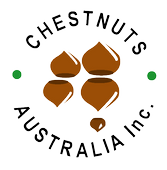Best Practice Explanatory Notes
EXPLANATORY NOTES FOR THE “BEST PRACTICE” SHEET
The “Best Practice” sheet incorporates knowledge gained from many sources over many years. Ultimately, some varieties are extremely susceptible to rot in some seasons. The rot is impossible to control in certain varieties using current knowledge. Therefore in susceptible seasons removal or non harvest of these varieties should be contemplated.
Research work conducted by William Washington over three seasons in 1994, 1995 and 1996 indicated that the following varieties were susceptible to rot in increasing order of susceptibility.
• Purton’s Pride
• Red Spanish
• Buffalo Queen
• Sword
• Colossal
• Marone
More recent findings have found that Bouche de Betizac should be added to this list.
Explanatory Notes — Pre-Harvest
1. Try to remove or destroy material on the orchard floor prior to flowering
- Recent work conducted by David Ogilvy and Harvey Smith shows that under certain weather conditions, internal rot infection occurs at flowering time. This is caused by spores that are released from the previous season’s burrs. It is unknown at this stage how far the spores will travel and therefore whether or not spores are likely to enter from a neighbouring property.
2. Prune to allow a minimum of 1 metre – 1.5 metres between trees and 1.5 metres beneath trees
- Good air movement through the orchard is important.
3. Do not use sprinklers or microjets during flowering
- This may facilitate spore dispersal from any remaining burr material.
Explanatory Notes — Harvest and Postharvest
1. Do cutting tests before harvest in case the nuts are already rotten (to save the costs of harvest and sorting)
- In somevarieties(insomeseasons)there is a percentage of rotten nutspresentbeforelheyeven hittheground.
2. Daily harvest is ideal
- The less time that the nuts spend on the ground the better, especially when the temperature is hot.
3. If burrs and nuts are hanging in the trees, try to shake them down
- Internal rots can develop when mature nuts are hanging in the trees.
4. It is recommended that nuts are washed and floated prior to despatch
- Discard floaters – they are always of lesser quality and sometimes rotten.
5. Cool chestnuts as quickly as possible
- Large containers full of nuts, will not cool down in the centre.
- Refrigerated water dips will bring down the temperature very quickly. Otherwise loose stack the bags/containers in the coolroom, allowing air flow around the bags/containers.
- Agents have the most problems with nuts that have not been properly cooled.
6. Store chestnuts at celsius to -2 celsius in high humidity in a cool room
- The nuts may need to be protected from drying out by wrapping them in plastic, loosely folded over.
Note: If they are completely sealed they will run out of oxygen and spoil. - Be on the lookout for the development of external mould, this can be so bad as to make the nuts un-saleable.
- If you do not have a cool room, it would be advisable to make arrangements prior to the season to hire cool room space somewhere. Even if you don’t intend to store chestnuts they will travel through the system in much better condition if cooled.
- It is unfair to other growers to consign hot chestnuts on transport with coo! nuts as ft will raise the temperature of the whole load.
7. Internal rots can continue to develop even at low temperatures
- Conduct the final cutting and inspection of nuts as close as possible to despatch (100 nuts randomly selected should be sufficient).
- If you detect even low levels of rot at this stage, it will mean that by the time they go through the distribution/selling chain the levels may be much higher (particularly if the agent does not sell them quickly).
8. Communicating with your agent before sending chestnuts is very important.
- If there is a backlog of nuts at the market, they will sell slowly and the price will be depressed.
- The cool storage arrangements with most agents is less than ideal. Usually the chestnuts are bought onto the selling floor each morning and can remain un-refrigerated for up to B hours per day. If they are not selling, this can happen for a week or much longer. If the nuts have any rot infection at all it will develop very quickly under these conditions.
- By holding the nuts until the agent is ready to sell them you will maintain control over the storage and condition of your nuts, which will mean that you are more likely to achie~ a higher price when you do sell.
- Continue to monitor internal and external condition of chestnuts during storage. They can still spoil in storage.
9. It is very important to use refrigerated transport and to impress upon your agent the need to maintain the cool chain.
- If rot infection is present in your nuts, it will develop very quickly if the cool chain is broken.
